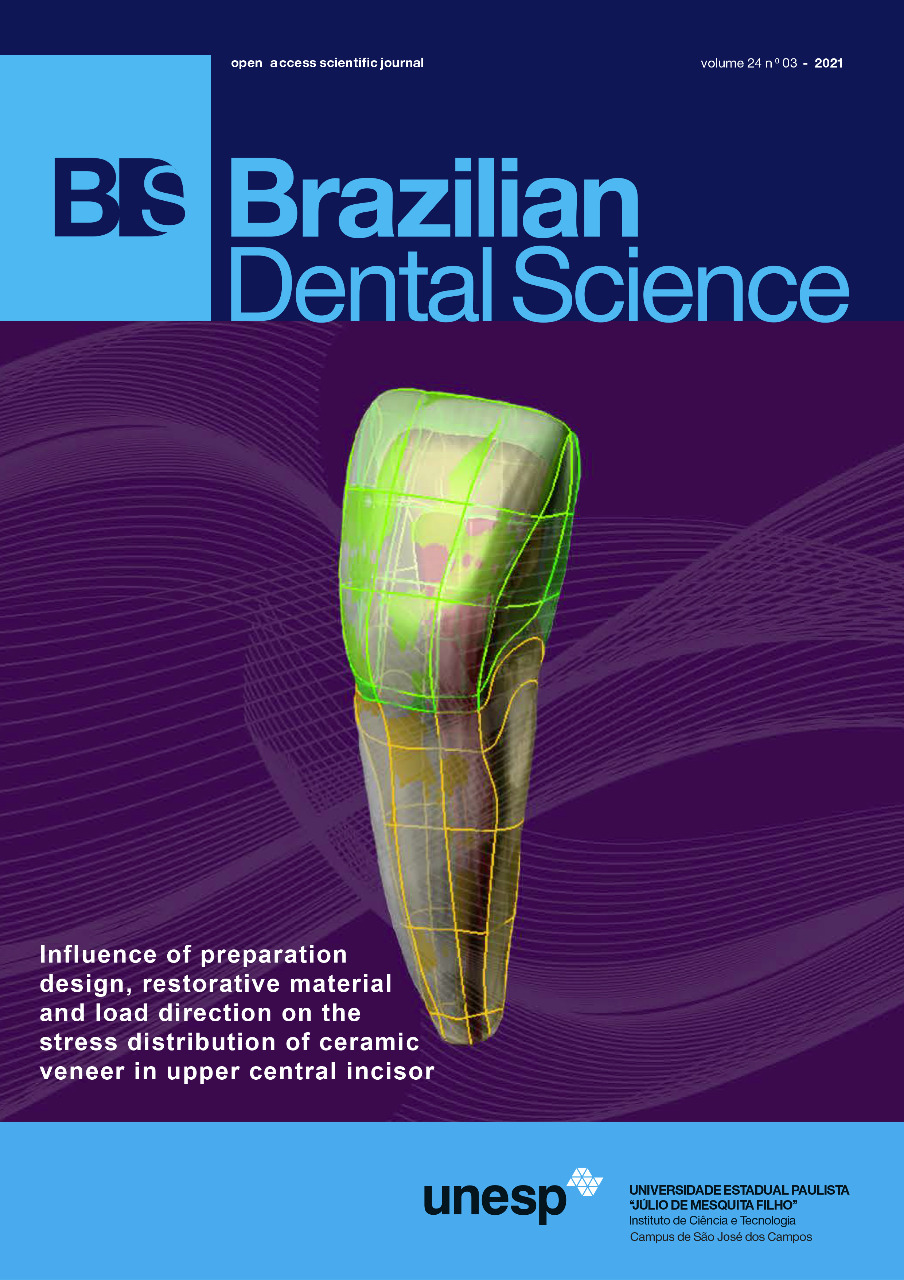An in vitro evaluation of surface roughness, color stability and bacterial accumulation of lithium disilicate ceramic after prophylactic periodontal treatment
DOI:
https://doi.org/10.14295/bds.2021.v24i3.2572Abstract
Objective: to evaluate the effect of scaling procedures using different ultrasonic tips on the surface roughness, color stability and bacterial accumulation of lithium disilicate ceramic. Material and Methods: Scaling procedure was carried out using ultrasonic scaler (Satalec, Acteon, North America) with stainless-steel tip (US), titanium tip (UT) and plastic tip (UP), on disc shaped lithium disilicate samples cemented into a cavity prepared onto the labial surface of freshly extracted bovine teeth (10 samples per group). The samples were stored in coffee solution in an incubator at 37°C for 12 days, which is equivalent to 1 year of coffee consumption. The surface roughness was measured before and after the scaling procedure using a profilometer and atomic force microscopy. The color parameters were measured before and after scaling and staining procedures using VITA Easyshade Advance 4.0 according to the CIE L*a*b* color order system. The samples were then incubated with Streptococcus mutans (S. mutans) suspension. After incubation, the plates with 30 to 300 typical colonies of S. mutans were counted in a colony counter and mean values of colony forming units were obtained (CFU/mL). Results: The titanium scaling tip showed a statistically significant higher mean values of change in surface roughness Ra and bacterial count than the plastic scaling tip. Color changes (E) were not a statistically significant among the groups. The results showed a statistically significant positive (direct) correlation between surface roughness and color change (p = 0.012) and also between surface roughness and bacterial count (p = 0.00).
Conclusion: Within the limitations of this study, titanium scaling instruments cause irreversible surface alterations of lithium disilcate ceramics which was in direct correlation to the color changes and bacterial accumulation; therefore, dentists should proceed with caution when scaling lithium disilicate surfaces. The findings of the current study may indicate the need for instruments or equipment that can remove plaque and calculus without causing surface damage.
Keywords
Surface properties; Color; Bacterial adhesion; Ultrasonics; Dental scaling; Ceramics.
Downloads
Downloads
Published
How to Cite
Issue
Section
License
Brazilian Dental Science uses the Creative Commons (CC-BY 4.0) license, thus preserving the integrity of articles in an open access environment. The journal allows the author to retain publishing rights without restrictions.
=================




























